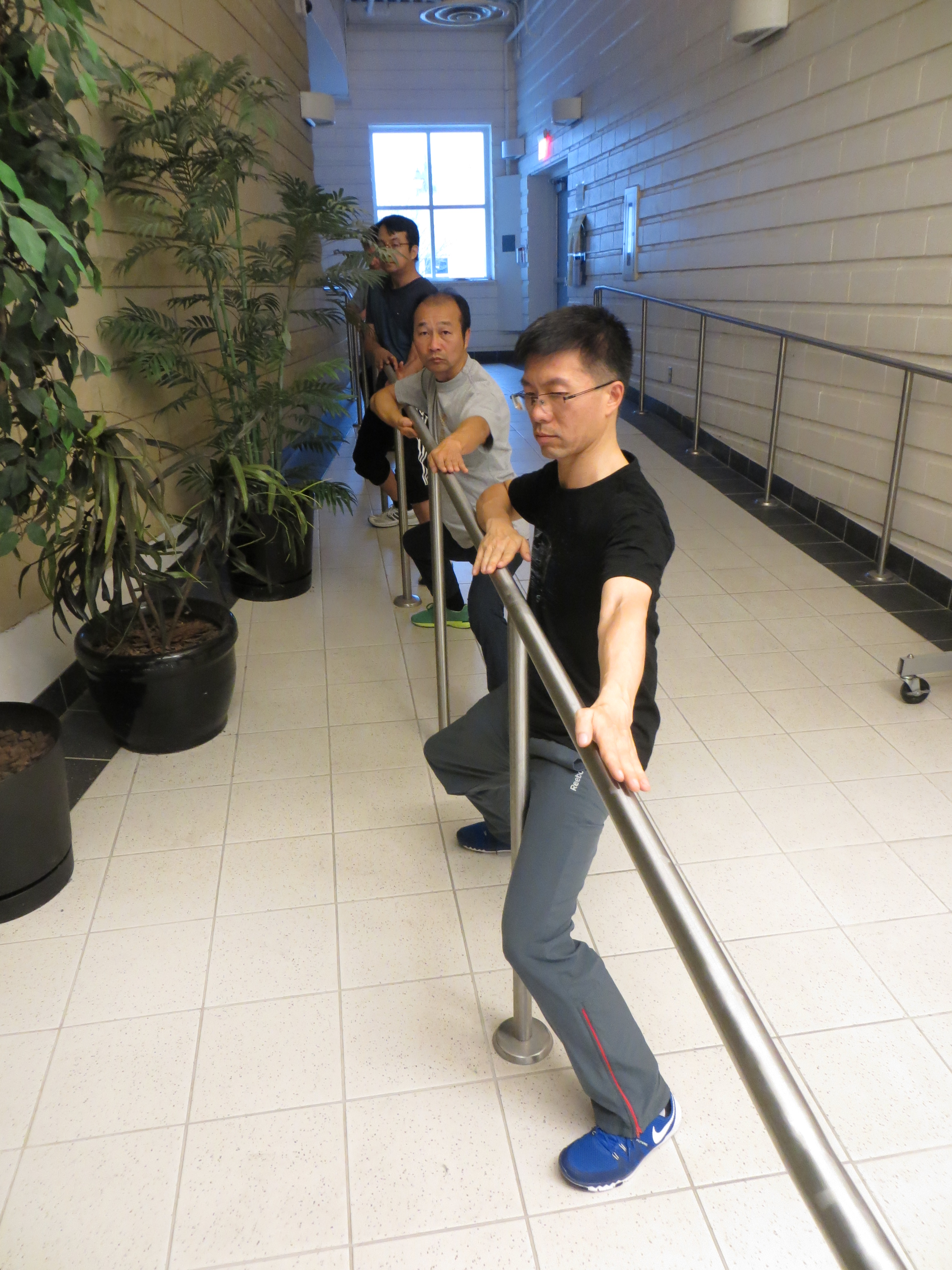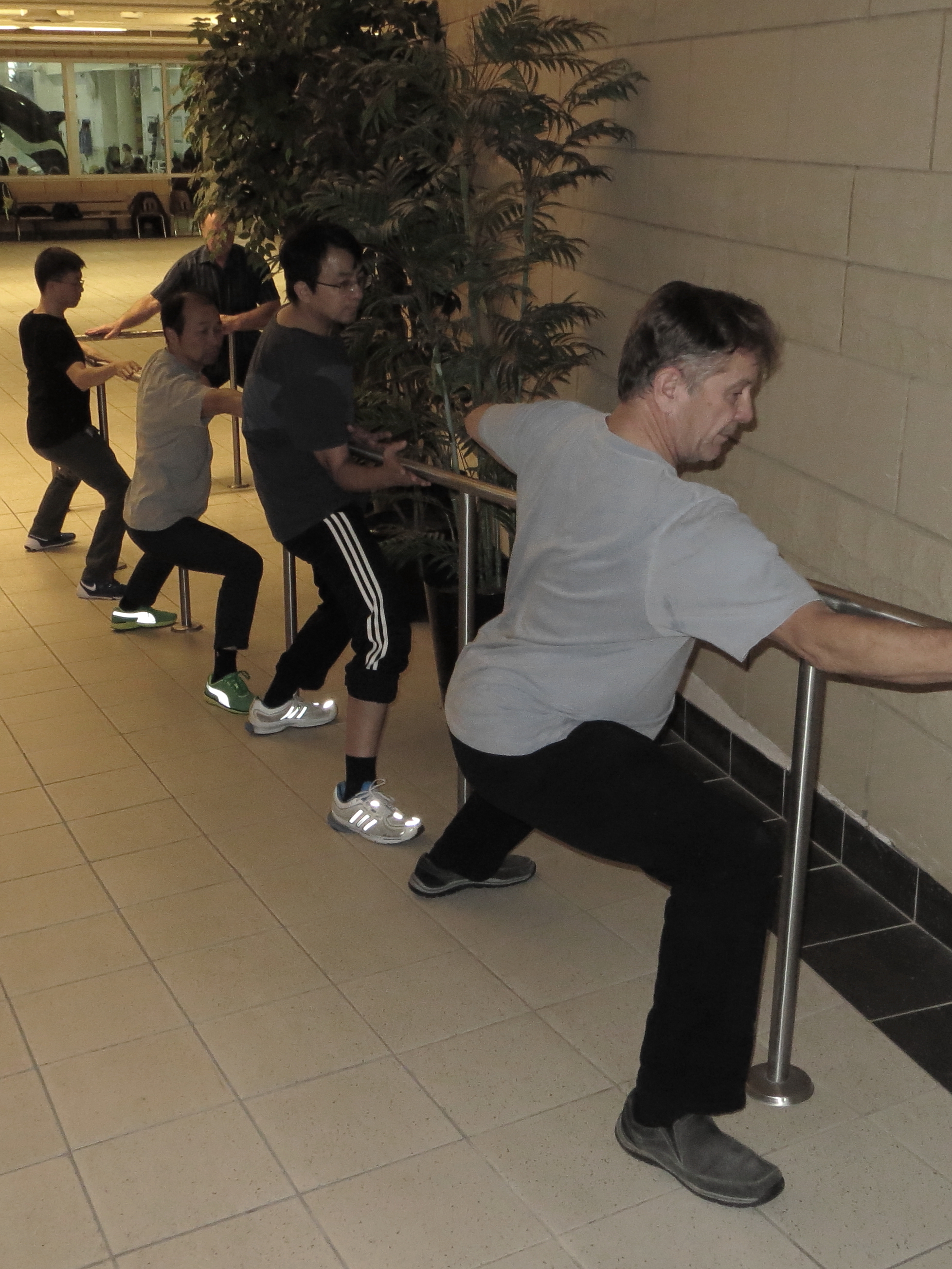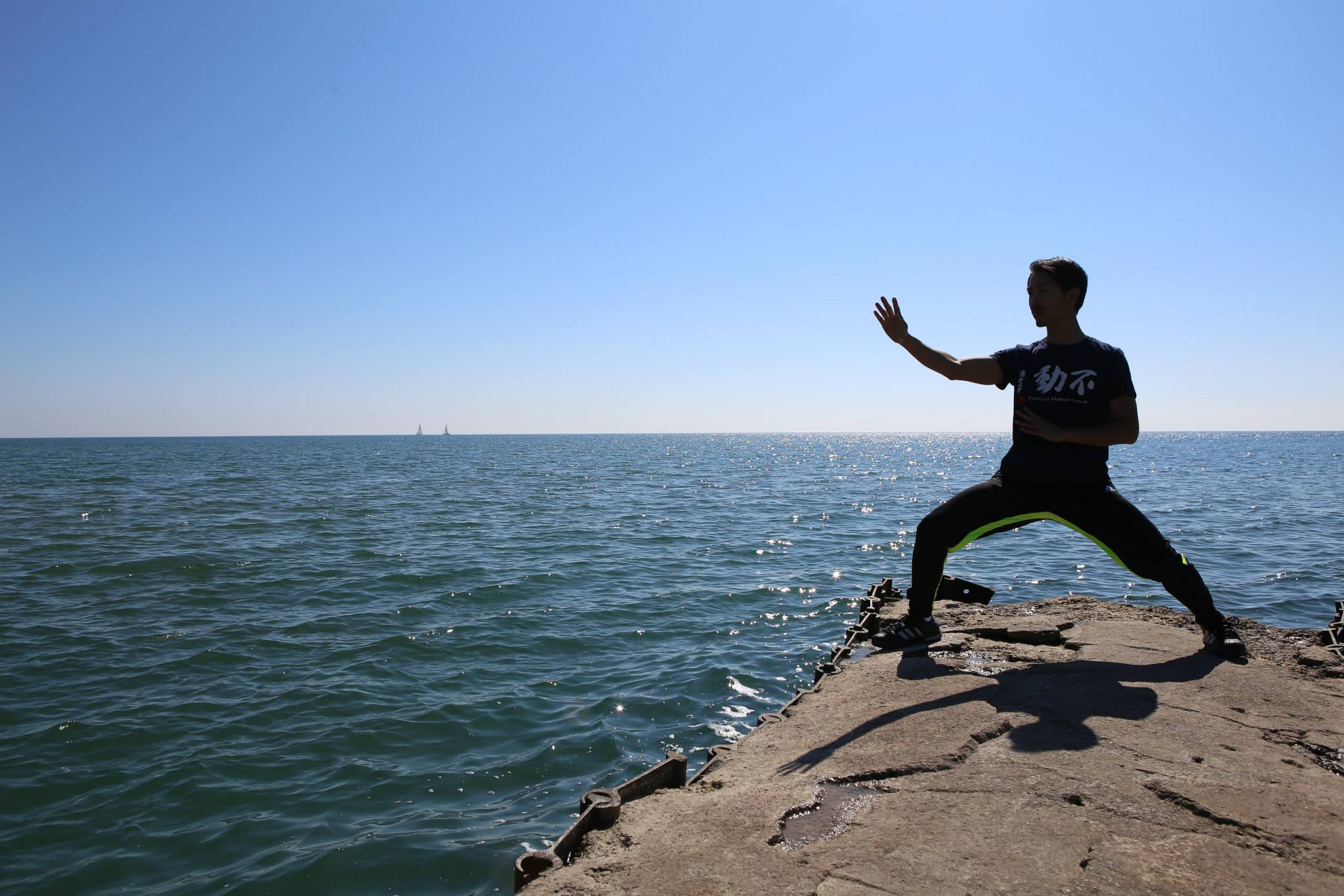- Twisting the towel
- Fetch Water
- Six Sealing Four Closing
- Positive Circle
- Negative Circle
- Double Positive Circle
- Double Negative Circle (together)
- Double Negative Circle (alternate)
- Positive-Negative Circle (Pole shaking)
- Positive Circle – Moving Step
- Negative Circle – Moving Step
- Six Sealing Four Closing – Moving Step
- Double Positive Circle – Moving Step
- Double Negative Circle (alternate) – Moving Step
- Positive-Negative Circle – Moving Step
Knowledge : Learning Method
1) Maintain a non-moving vertical rod from head to left heel throughout the action.
2) Hold the right forearm in front of the chest with a fist, while the left fist is on the side of the body.
3) Throw the right fist down to the right side as hard as possible with a raising right knee to create a scissoring effect, while throwing the left fist up to the left ear.
4) There should be no tossing or turning of the body, but there is a spiral stretch along the vertical rod.
Today, we focused on the details of 3 foundation exercises:
- Twisting the Towel
- Fetch Water
- Six Sealing Four Closing
At the Ottawa Nov. 12-13, 2016 workshop, Master Chen Zhonghua talked about when doing twisting the towel or six sealing four closing, our hands and elbows must stay on the same line. Where was that line exactly? We often just imagined where that line was. He told us to use a physical object to guide us, and he used a stick to show us. In today’s class in Toronto, we started with twisting the towel and covered what I learned at the Ottawa workshop. We went on to use the railing at the community centre to do the six sealing four closing exercise.


Instructor: Kelvin Ho
Topics:
- Footwork
– Shoveling out with Front Heel, Land the Front Foot, Pull up the Rear Foot
– Jumping across to cover distance - Aiming
– Aligning Front Hand with the Rear Foot

Negative circle is likely the second thing one learns in Practical Method. The following are some starter instructions for a right-side negative circle:
- The right side is considered the front side, and the left side is consider the rear side.
- Find a line that is parallel to your chest on the ground.
- Put your right foot at 45 degrees to the line with the heel touch the line.
- Put your left foot at 90 degrees to the line with the toes touch the line.

Positive circle is likely the first thing one learns in Practical Method. The following are some starter instructions for a right-side positive circle:
- The right side is considered the front side, and the left side is consider the rear side.
- Find a line that is parallel to your chest on the ground.
- Put your right foot at 45 degrees to the line with the heel touch the line.
- Put your left foot at 90 degrees to the line with the toes touch the line.
I have a question regarding the training speed of Yilu. I remember Chen Laoshi saying, that doing two slow and one fast Yilu (and then again two slow, one fast) would be good. But I am not sure about the context anymore. Here on Daqinshan the „group“ prefer to do fast Yilus (like 4:30 minutes), instead of slow ones (like 8 minutes).
What I would like to know is, if there is a certain method to train Yilu (like two slow – one fast) or if the speed is just depending on the circumstances (learning level, day`s form and so on).
Thank you!

When I first studied practical method in Nov. 2009, there were a few things that made a long lasting impression. They were:
- In with elbow no hand, out with hand no elbow.
- Don’t move
- Yilu, which is made up of only positive and negative circles.
Many beginners including myself usually ask the following questions:
- How did you (Master Chen) know to do that?
- How can I not move?
- What can I do that myself?
- How do I train that?
 Shifu Chen Zhonghua often emphasizes how to learn Taijiquan. This web site has a great article called 6 Methods of Learning Tai Chi. (Read this if you have not already.) It expands and elaborates on Grandmaster Hong’s “Look, Listen, and Ask” practice method.
Shifu Chen Zhonghua often emphasizes how to learn Taijiquan. This web site has a great article called 6 Methods of Learning Tai Chi. (Read this if you have not already.) It expands and elaborates on Grandmaster Hong’s “Look, Listen, and Ask” practice method.
In motor control research, I found the neurological basis for this method of learning. There are neurological mechanisms called mirror neurons. The basic premise is when we see a person do something, mirror neurons fire off in our brain attempting to duplicate the pattern in our nervous system required to copy the movement. At first, it is an imperfect copy because it follows old neurological pathways. With repeated viewing of the action, our brains and nervous system do a really good job of creating new neurological pathways to accurately copy the movement. Read more
1) Shovel out the front heel
2) Land the front toes and knee together
3) Extend the hands out
Note: Don’t push the opponent in step 1 and 2.


